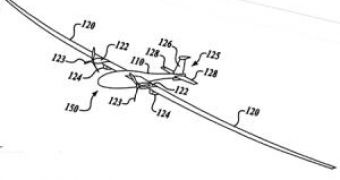Perhaps the most famous aerospace corporation, Boeing, has come up with a new craft supposed to be able to stay aloft, depending on the altitude, from about ten days to nearly a whole month. The Unmanned Aerial Vehicle (UAV) will be powered by a patented hydrogen fuel system and will have a wide range of applications, both in military and civilian activities.
At first glance, there's not much to the aircraft to impress the untrained eye, except, perhaps, for its unusual shape. The designers have opted not to include the fuel tanks in the wings, as is the case for most UAVs, but to place them in the main body. This allows for a more elongated and thinned wing shape that would provide an enhanced aerodynamic design, ensuring, in turn, a smoother flight and noticeably reducing the fuel consumption factors in the long run.
Speaking of the fuel, the plane's tank will hold fuel in the form of liquid hydrogen contained in vacuum flasks, which will only be thawed when needed, upon feeding it to the propelling engines. The intelligently-designed reduced weight and ergonomic usage of space of the UAV's body will also contribute to a lower consumption of fuel. The payload weight that the cargo bay can efficiently support is estimated at 2,000 pounds (907 kilograms).
While carrying that weight (which is itself an impressive feat for an UAV), the plane will be able to stay aloft at extremely high altitudes of about 60,000 feet (18,288 meters) for more than ten days at a time, and for about a month at lower altitudes. Besides the obvious military uses for such an UAV, there are also more peaceful options, like providing aerial imagery for a vast series of purposes, or even ensuring wireless connectivity in certain regions.

 14 DAY TRIAL //
14 DAY TRIAL //